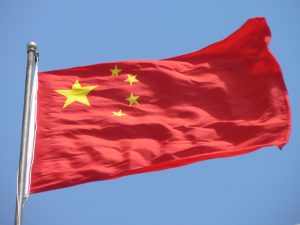The Washington Post recently reported that over 100 missile silos have been discovered being built in a desert near the city of Yumen in China. Chinese media have since claimed that the structures are actually part of a wind farm, but the experts behind the Post piece stand by their analysis.
Analysts indicate that these silos will probably house the newest intercontinental ballistic missile (ICBM) in the Chinese strategic nuclear arsenal, the DF-41. This ICBM can reach the continental United States, is solid-fueled, and is believed to eventually be a replacement for the liquid-fueled, silo-based DF-5 ICBM. Estimates vary, but the DF-41 is rumored to be able to carry anywhere from three to 10 nuclear warheads. This is a formidable strategic weapon seemingly designed to be utilized as a component of a launch-on-warning policy while deployed in hardened silos.
What threat do these ICBM silos pose for the United States and what should the U.S. do to counter the threat?
Let’s start by putting ourselves in China’s position. There could be two primary reasons why President Xi Jinping has decided to build over 100 new ICBM silos. These reasons are not mutually exclusive. The first reason could simply be to adopt a launch-on-warning policy. This would mean most if not all the silos will probably be filled with the DF-41 and China will utilize an early warning system to detect an enemy attack and respond by launching its ICBMs before they can be destroyed in the silos. Adding strength to this theory are reports that Russia has been assisting China to build a ballistic missile early warning system. The adoption of a launch-on-warning policy would increase the survivability of China’s strategic nuclear weapons and bring them closer to the standard of the United States and Russia.
The second reason could be to complicate U.S. counterforce targeting, meaning the targeting of the enemy’s military infrastructure. Under the Strategic Arms Reduction Treaty (New START), the United States and Russia are each allowed to have 1,550 deployed strategic nuclear warheads. The introduction of over 100 ICBM silos significantly adds to potential targets that the U.S. must consider in planning for a nuclear attack. In the event of a strategic nuclear conflict, it is expected that at least two warheads would be utilized for hardened counterforce targets, reducing the U.S. arsenal by over 200 weapons. A recent statement by the Chinese Ministry of Foreign Affairs stressed the growth and advancement of the Russia-China comprehensive strategic partnership of coordination. While this is not technically an alliance at this stage, it is highly plausible that the cooperation between the two countries could include deliberately complicating U.S. targeting plans and degrading the U.S. strategic nuclear arsenal.
In this scenario, the Chinese silos could collectively contain just a handful of ICBMs. The United States would still be required to target each silo, as there would be no certainty regarding which of the over 100 silos contained missiles. With the element of having to allocate at least two warheads to ensure the destruction of hardened targets, it’s evident that the U.S. arsenal will be stretched thin as it still needs to maintain a credible deterrent against Russia. It will be further stretched if China decides to continue building ICBM silos. One can see how this is an effective strategy designed to complicate a U.S. strategic response. So, what can the United States do about it?
It’s critical that the U.S. builds and maintains a robust nuclear warfighting capability. With an effective triad of air, sea, and land based strategic nuclear weapons, the United States is illustrating that it has options available for different contingencies. Added to this capability are tactical nuclear weapons based in Europe and the introduction of the low-yield submarine-launched ballistic missile deployed on the Ohio-class ballistic missile submarines. As diverse as this force is, it still does not adequately deal with the addition of Chinese silos due to New START limitations. A possible option is the introduction and deployment of land based nuclear medium and intermediate range ballistic missiles within range of Chinese strategic weapons. These could be positioned in countries willing to accept them and due to the demise of the Intermediate-Range Nuclear Forces (INF) Treaty in 2019, the quantity deployed would not be subject to restrictions.
The deployment of INF range nuclear weapons would resolve the issue of stretching the U.S. strategic arsenal thin. A step forward for the Biden administration would be to publicly commence negotiations with countries willing to house these weapons while keeping the door open to China for a diplomatic solution. The potential threat of being surrounded by U.S.-controlled INF range weapons could result in China re-thinking its opposition to entering into New START negotiations with the United States and Russia. If nothing is done to counter China’s rapid nuclear weapons increase, we could see hundreds more ICBM silos being built, rendering the U.S. strategic arsenal inadequate to deal with multiple threats in addition to fulfilling its extended deterrence role to allies including South Korea, Japan, and Australia.
China and Russia have demonstrated that they are united in reducing the influence and power of the United States in order to achieve their own strategic goals. A future strategic nuclear alliance between China and Russia is not a fantasy. China has the technological and economic capability to continue modernizing and increasing the size of its nuclear forces exponentially. While it is seemingly lagging behind in an effective ballistic missile early warning system and ballistic missile submarines, it already possesses a robust nuclear force including INF range weapons and mobile ICBM launchers. It will not take China long to bridge the gap and the United States may find itself dangerously outnumbered against two major nuclear powers. The Biden administration needs to proactively deal with this now because China is steamrolling ahead to catch up.

































